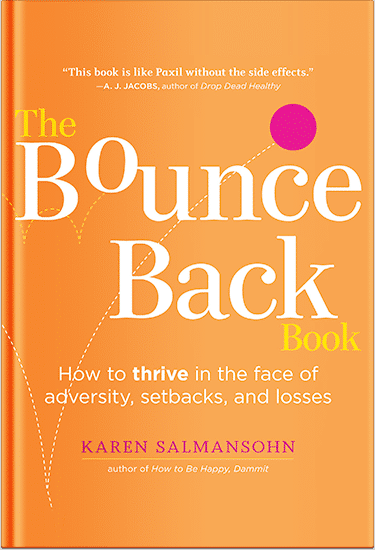 Curious about Invisalign vs Metal Braces? Learn how they compare in cost, comfort, appearance, and treatment time to find what’s right for you.
Curious about Invisalign vs Metal Braces? Learn how they compare in cost, comfort, appearance, and treatment time to find what’s right for you.
Have you ever wondered which treatment fits your smile goals better— clear Invisalign or the classic metal brackets you’ve seen for years?
Let’s cut through the confusion.
Invisalign uses a set of custom-made, clear plastic aligners that slip over your teeth. You wear each set for about 1–2 weeks. They gradually guide your teeth into place without wires, without brackets, and with fewer office visits.
Metal braces, though, have been around much longer. They consist of brackets glued to your teeth and connected with wires. Your orthodontist adjusts the wire periodically to move your teeth.
Here’s what sets them apart:
- Invisalign is nearly invisible. People might not even notice you’re wearing them.
- Metal braces are more noticeable, but they can tackle complex cases more efficiently.
When I had to choose, I considered how visible the treatment would be during work meetings and social events. Invisalign won for me—but if my bite were more severe, I might’ve leaned the other way.
So, which works best for you? That depends on how complex your dental situation is and how involved you’re willing to be in your care.
Cost Comparison: Invisalign vs Metal Braces
Now let’s talk dollars.
The average cost of Invisalign ranges between $3,000 and $8,000, depending on the severity and duration. Metal braces? You’re looking at around $2,500 to $7,500.
But that’s not the full story.
Let’s break it down:
|
Treatment Type
|
Average Cost
|
Insurance Coverage
|
Maintenance Costs
|
|
Invisalign
|
$3,000 – $8,000
|
Often partially covered
|
May require replacement trays
|
|
Metal Braces
|
$2,500 – $7,500
|
Usually well covered
|
Minimal after initial setup
|
Insurance often offsets a good chunk of either. If you’re covered under dental insurance, there’s a high chance it includes orthodontic treatment, but you’ll want to double-check.
If your case is mild, Invisalign could cost less than braces. But if you’re someone who tends to misplace things, broken or lost aligners can add up.
Effectiveness & Treatment Duration
Here’s the part that matters: Do they both work equally well?
Not quite.
- Invisalign is great for mild to moderate misalignment.
- Metal braces are ideal for severe crowding, rotated teeth, or significant bite issues.
Invisalign relies on patient compliance. You’ll need to wear the aligners at least 22 hours a day. If you forget or remove them often? The treatment can take longer or fail altogether.
Typical treatment times:
- Invisalign: 6–18 months
- Metal Braces: 18–36 months
My nephew had complex bite issues. Invisalign wasn’t even an option for him. Metal braces gave him the bite alignment he needed in just over two years. So if your case is complex, traditional braces might give you faster and better results.
Comfort, Appearance & Daily Life
Which one feels better? Which one looks better?
Comfort:
- Invisalign is smooth, custom-fitted, and rarely causes mouth sores.
- Braces can cause irritation from the wires and brackets.
Appearance:
- Invisalign is virtually invisible.
- Metal braces are visible, though colored bands can be fun for kids.
Lifestyle Adjustments:
With Invisalign:
- You must remove them when eating or drinking anything but water.
- You can brush and floss like normal.
With Metal Braces:
- Avoid sticky or hard foods.
- Use special tools to floss.
So if you’re always on the go, and hate the idea of food restrictions or extra cleaning tools, Invisalign could fit better into your life.
Maintenance & Follow-Up Needs
This might not seem like a big deal—until your calendar fills up.
Invisalign usually requires fewer office visits. You’ll swap aligners at home every 1–2 weeks. But you do need to keep them clean, using a special solution or brushing gently with clear soap.
Metal braces, on the other hand, need tightening every 4–6 weeks. They’re harder to clean—food gets stuck easily, and flossing takes patience.
If you’re prone to forgetting appointments, fewer check-ins with Invisalign might help. But don’t overlook one key thing: aligners must be worn consistently, or they won’t work.
Suitability by Age and Dental Condition
This question comes up a lot: Are braces better for kids and teens?
Invisalign Teen exists—but it’s best for motivated teens who won’t “forget” to wear their aligners.
For young patients with more complex needs (like extractions or jaw correction), metal braces often provide more control and better results.
Adults, though, often prefer Invisalign for professional reasons. I’ve seen colleagues choose Invisalign just to avoid the stigma of braces in client meetings.
If you’re a parent, your orthodontist might guide you toward braces for dependability. If you’re an adult with moderate alignment needs, Invisalign could be your best bet.
Frequently Asked Questions
Can Invisalign treat overbites or underbites?
Yes, for mild to moderate cases. More complex bite corrections might still need braces or a combination of both.
Is Invisalign more painful than braces?
Most people report less discomfort with Invisalign. You may feel pressure when switching trays, but no poking wires.
Do metal braces work faster than Invisalign?
For more complex cases, yes. They often move teeth more efficiently when major corrections are needed.
How often do I have to wear Invisalign aligners?
At least 22 hours a day. Taking them out too often can delay or ruin your results.
Can I eat anything with Invisalign?
Yes—just take them out first. But brush before putting them back in to avoid staining or decay.
Are the results from Invisalign permanent?
They can be, with proper aftercare like retainers. Skipping post-treatment steps may cause teeth to shift back.
Conclusion & Expert Recommendation
There’s no one-size-fits-all answer in the Invisalign vs Metal Braces debate. It all depends on your dental condition, lifestyle, and what kind of maintenance you’re ready to commit to.
If appearance, flexibility, and comfort are your top priorities, Invisalign could be the answer. If you need more powerful treatment or are prone to losing things, metal braces might be the way to go.
P.S. Before you zip off to your next Internet pit stop, check out these 2 game changers below - that could dramatically upscale your life.
1. Check Out My Book On Enjoying A Well-Lived Life: It’s called "Your To Die For Life: How to Maximize Joy and Minimize Regret Before Your Time Runs Out." Think of it as your life’s manual to cranking up the volume on joy, meaning, and connection. Learn more here.
2. Life Review Therapy - What if you could get a clear picture of where you are versus where you want to be, and find out exactly why you’re not there yet? That’s what Life Review Therapy is all about.. If you’re serious about transforming your life, let’s talk. Learn more HERE.
Think happier. Think calmer.
Think about subscribing for free weekly tools here.
No SPAM, ever! Read the Privacy Policy for more information.
One last step!
Please go to your inbox and click the confirmation link we just emailed you so you can start to get your free weekly NotSalmon Happiness Tools! Plus, you’ll immediately receive a chunklette of Karen’s bestselling Bounce Back Book!


 Curious about Invisalign vs Metal Braces? Learn how they compare in cost, comfort, appearance, and treatment time to find what’s right for you.
Curious about Invisalign vs Metal Braces? Learn how they compare in cost, comfort, appearance, and treatment time to find what’s right for you.